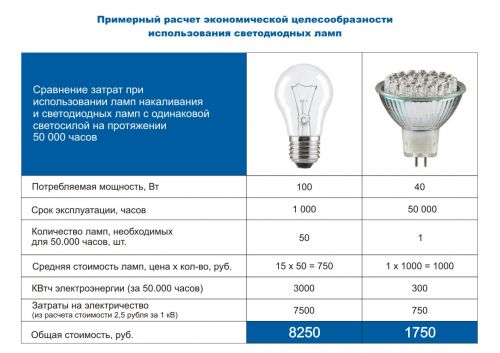Without a doubt, the LED lamp is a new generation light source. LED lamps can reduce power consumption by 2-8 times. Perhaps not everyone knows that in Europe and Russia, laws have already been adopted to gradually ban the production and turnover of incandescent lamps. Halogen, mercury and fluorescent lamps will soon cease to be in demand.
What is so different about LED lamps? What does the consumer get by purchasing this product? Here are just a few benefits:
Safety-The LEDs operate from low-voltage power sources. In addition, the LED lamp is absolutely harmless to the eyes, due to the absence of ultraviolet, infrared radiation and flickering.
Resistance to voltage fluctuations – the LEDs do not burn out either when the voltage jumps or when it drops.
Durability-the service life of LEDs ranges from 50,000 to 100,000 hours of operation (from 5 to 11 years). And also LED lamps are resistant to vibrations, which increases their service life.
Cost-effectiveness. We would like to dwell on this factor in more detail. In a simplified sense, an LED lamp consists of a crystal, a housing and an optical system. The crystal serves as a semiconductor that allows you to convert electric current into light without unnecessary costs. It is thanks to this that electricity is significantly reduced. And, despite the high price of LED lamps, their use not only fully pays off the invested costs for from 1 to 2.5 years (depending on the type of lamp), but also allows you to significantly save energy and maintenance costs in the future.
And these are not abstract words, you can calculate your savings yourself. From the point of view of energy saving, the main indicator by which you can judge the light source is the light efficiency. This parameter shows the value of the luminous flux emitted by the light source when consuming 1 W of electrical energy. An incandescent lamp has a luminous efficiency of 10 Lm/W, a fluorescent lamp-65 Lm/W, modern LEDs have 110-130 Lm/W. Knowing these parameters, you can determine which luminous flux creates a particular light source. So, an incandescent lamp of 60 W creates a luminous flux of 600 Lm. And an office lamp with four fluorescent lamps creates a luminous flux of 4000 Lm.
Below is an example of calculating your savings from using an LED lamp.
We are ready to offer you a large number of different LED lamps. Our catalog presents LED lamps of both industrial and explosion-proof versions.

